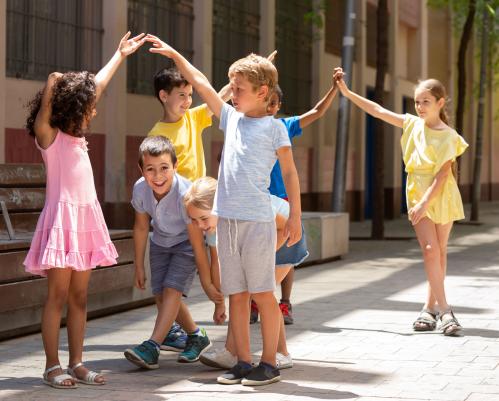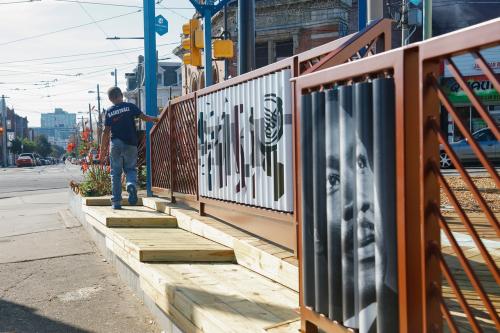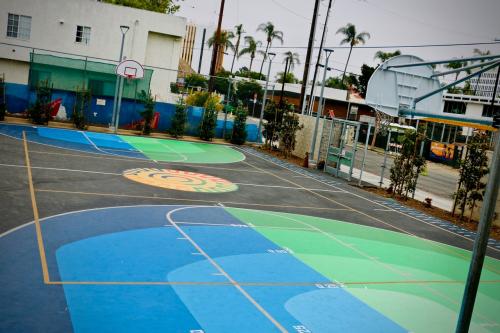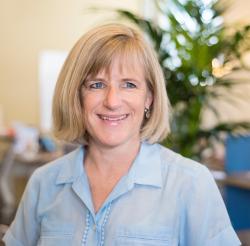As school leaders, educators, and families think ahead to the new school year, they are faced with tremendous challenges to ensure school experiences are safe for kids. They have a critical role in creating the conditions needed to help kids recover from lost learning and the trauma caused by the pandemic, especially for families in low-income or socially vulnerable communities.
Along with parents, there is a shared understanding among educators, school leaders, researchers, and child psychologists that the 2021-2022 school year will be critical in shaping kids’ experiences and the adults they become. One important decision that will be crucial to these two factors in the new school year and that many schools now face is whether they will or will not have recess next year.
Part of the challenge in making this decision is that schools don’t know where to turn for guidance. The Centers for Disease Control and Prevention (CDC) has not provided official guidance to schools specifically about recess. The CDC does, however, recommend outdoor activities, “cohorting” groups of students, mask wearing, and physical distancing—all of which are possible during recess. Most state departments of health or education also have not provided guidance to schools about recess. Some states have mandates of minimum number of minutes for recess, so schools and districts have to figure out for themselves how to host recess safely that ensures quality, COVID-safe recess experiences. And at other schools, recess may not have been part of the regular school day before the pandemic, so getting back onto the playground might feel especially daunting.
The Many Benefits of Recess
Recess is a critical time in the school day, and all kids deserve to experience it next year. A growing body of research supports the physical, social, and emotional benefits kids get from playing at recess.
“Play allows children to use their creativity while developing their imagination, dexterity, and physical, cognitive, and emotional strength,” says the American Academy of Pediatrics. “Play allows children to create and explore a world they can master, conquering their fears while practicing adult roles.”
A big focus for educators now is how they will build social connections with and among kids. Play can create opportunities for kids and adults to feel emotionally and physically safe so that they can develop strong relationships and build healthy communities. According to researchers, recess can be the foundation to helping kids recover from trauma and learning loss. Many parents agree, as over the past year, they have prioritized the purpose of education differently—from primarily building academic skills to supporting social-emotional development as well.
How to Create COVID-safe Recess
The good news is that it isn’t hard to create a COVID-safe environment for recess—it just takes intentionality and planning. Playworks, a national nonprofit leveraging the power of play to bring out the best in every kid, offers free tools, COVID-safe games, and resources to support school leaders and educators as they reintroduce in-person recess. Here are some examples:
- Journey around the World:
- Have the group of students spread out and explain to them that they are going on a journey around the world using motion and creativity.
- Choose one student to pick the first destination, then ask another student to choose the mode of transportation to get there, such as hopping to Kenya.
- Have the students act out the mode of transportation in their locations for a few seconds before reaching the destination.
- Upon “arrival” after a few seconds of the activity, ask a few of the students what there is to see/do while there and act those out accordingly.
- Ensure every child has an opportunity to provide some input into the journey and let this be as student-driven as possible.
- Switch:
- Play on a foursquare court or map a larger space using cones or chalk to make a square and put one cone or X-mark with chalk in the middle. One player stands on each corner and one in the middle.
- The person in the middle says “switch” to start the game and then all players must find a new corner/cone to occupy. No player can go to the center cone.
- If two players arrive at the corner at the same time, a quick rock-paper-scissors is played, and the winner stays at the corner. The group tells the person who is less successful “good job” or “nice try” and the student joins the line of other students.
- The next person in line becomes the person in the middle and begins the next round by saying “switch.”
One key component in the design of a COVID-safe recess is mapping the space. The playground can feature different stations for cohorts to visit until all kids can play together safely at school—using cones, chalk, lines, and more. Indoor space can be mapped too—in classrooms, hallways, auditoriums, and more—to ensure kids can play indoors safely. Playworks’ Safe Return to Play Training and Playworks School Reopening Workbook both feature ways to think creatively about mapping spaces to maximize COVID-safe play.
All kids deserve to have recess next year. The pandemic has established new norms throughout our society, and it presents us with that same opportunity in education. We have an unprecedented chance to prioritize equitable opportunities for play for all kids returning to school next year. Because there isn’t formal guidance and it is left up to each school, we all have a critical role in making safe and fun recess come to fruition for every kid.








Commentary
All kids deserve to have recess next school year
May 24, 2021